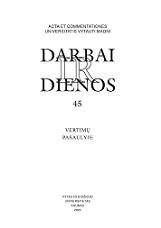The Language of Advertising. Analysis of original and translated texts
The Language of Advertising. Analysis of original and translated texts
Author(s): Jurgita VaičenonienėSubject(s): Language and Literature Studies
Published by: Vytauto Didžiojo Universitetas
Keywords: Language; Advertising; Analysis; original; translate;
Summary/Abstract: During the 20th century, globalization, international communication, marketing and economic forces contributed to the growth and spread of the advertising phenomenon. At present, advertisements occupy a considerable niche in our everyday lives, influencing our decisions and choices, no matter whether we are conscious of it or not. The persistence of advertising material can be illustrated by the fact that the market for advertising in Lithuania grew by 27.9 percent in 2005 in comparison with the previous year (TNS Gallup, 2005). Advertisements can be defined through their key functions, which are to attract attention, persuade and affect the decisions of the consumer. As a means of achieving these aims, a wide range of manipulative linguistic, visual and other devices are employed. The global scale of marketing leads to the fact that, in many cases, products and services are advertised on an international basis. Thus the verbal message of the advertisement requires translation. It is a well-known fact that different cultures may exhibit cultural specificities with respect to stylistic choices and other language-use preferences within the same genre.
Journal: Darbai ir dienos
- Issue Year: 2006
- Issue No: 45
- Page Range: 215-237
- Page Count: 23
- Language: English

